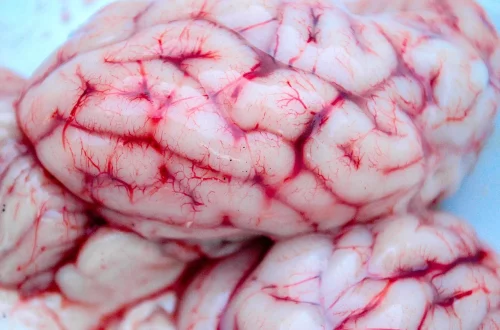
Understanding Baby Fleas: Prevention and Treatment for Your Pets
Understanding the presence of fleas in our pets is crucial for ensuring their health and well-being. Fleas are tiny, wingless insects that thrive on the blood of mammals and birds, making them a common nuisance for pet owners. They are notorious for their ability to reproduce rapidly, which can lead to an infestation in a very short time. Baby fleas, or flea larvae, are particularly concerning because they can multiply quickly and create a more significant problem if not managed promptly.
The life cycle of fleas is complex and consists of several stages: egg, larva, pupa, and adult. Understanding this cycle can help pet owners recognize the signs of a flea problem early on and take appropriate action. Fleas not only cause discomfort through their bites but can also lead to more severe health issues for pets, including allergic reactions and the transmission of parasites like tapeworms.
As responsible pet owners, we need to be informed about prevention methods and treatment options available to keep our furry friends healthy and flea-free. This article aims to shed light on the various aspects of managing flea issues in pets, offering insights into prevention strategies and effective treatments.
Identifying Flea Infestations in Pets
Recognizing a flea infestation in your pet can sometimes be challenging. Fleas are small, measuring only about 1/8 inch long, and their dark brown color allows them to blend seamlessly into a pet’s fur. One of the most common signs of a flea infestation is excessive scratching or biting at the skin. If you notice your pet frequently scratching, biting, or licking certain areas, it might be time to investigate further.
Another indicator of a flea problem is the presence of flea dirt, which looks like small black specks in your pet’s fur. This flea dirt is essentially flea feces, composed of digested blood. To check for flea dirt, you can run a fine-toothed comb through your pet’s fur, particularly around the neck and base of the tail, where fleas tend to congregate. If you find any of these black specks, place them on a wet paper towel. If they turn red, it confirms the presence of fleas, as the specks are digested blood.
Additionally, you may observe small, white eggs on your pet’s fur or in their bedding. Flea eggs are oval and can easily fall off your pet, contributing to the infestation in your home environment. If your pet is experiencing hair loss, skin irritations, or developing hot spots, these could also be signs of a flea issue.
Monitoring your pet’s behavior and physical condition is essential for early detection. Regular grooming and examination can help identify flea problems before they escalate. If you suspect your pet has fleas, it is crucial to act quickly to prevent the infestation from spreading to your home and affecting other pets.
Effective Prevention Strategies for Fleas
Preventing fleas is always better than treating an infestation. There are several effective strategies pet owners can adopt to keep their pets flea-free. One of the most common methods is the use of flea prevention products. These include topical treatments, oral medications, and flea collars. Topical treatments are applied directly to your pet’s skin and provide long-lasting protection. Oral medications work systemically, killing fleas when they bite your pet.
Regular grooming is another crucial preventive measure. Brushing your pet regularly not only helps to keep their coat healthy and free of tangles but also allows you to check for signs of fleas or flea dirt. During grooming sessions, you can also use a flea comb, specifically designed to trap fleas and their eggs.
Maintaining a clean living environment is equally important in flea prevention. Vacuuming your home frequently can help remove flea eggs and larvae from carpets, upholstery, and pet bedding. Be sure to dispose of the vacuum bag or empty the canister outside to prevent any fleas from re-entering your home. Washing your pet’s bedding regularly in hot water will also help eliminate any existing fleas or eggs.
Outdoor environments can also contribute to flea problems. Keeping your yard tidy by trimming grass and bushes can reduce the areas where fleas thrive. If your pet spends a lot of time outdoors, consider creating a designated area for them that is free from tall grass and shrubs, which are common hiding spots for fleas.
Using flea-repellent sprays in your yard can also provide additional protection. However, ensure that any products used are safe for pets and follow the manufacturer’s instructions carefully. By integrating these prevention strategies into your routine, you can significantly reduce the chances of a flea infestation in your home.
Treatment Options for Fleas on Pets
If your pet has been infested with fleas, it is essential to act quickly to treat the problem effectively. The first step in treating fleas is to choose an appropriate flea treatment. There are various options available, including topical treatments, oral medications, and shampoos. Each has its advantages and can be effective, depending on the severity of the infestation.
Topical treatments are popular because they provide long-lasting protection and are easy to apply. These treatments are usually applied to the back of the neck, where pets cannot lick it off. They work by killing adult fleas on contact and can also target flea larvae in the environment.
Oral medications are another effective option that can kill fleas quickly after they bite your pet. These treatments are available in chewable form or as tablets and can provide immediate relief from itching and discomfort. However, it is essential to consult with your veterinarian before choosing an oral treatment, as some pets may have underlying health conditions that could be affected by these medications.
Flea shampoos can help alleviate symptoms and kill fleas on contact. While these may not offer long-lasting protection, they can be effective in reducing the flea population on your pet. When using shampoos, always follow the instructions carefully, as overuse can irritate your pet’s skin.
In addition to treating your pet, it is crucial to address the home environment to prevent re-infestation. Vacuuming and washing all pet bedding, as mentioned earlier, are vital steps. You may also want to consider using flea sprays or powders designed for home use to treat carpets and furniture.
For severe infestations, it may be beneficial to consult a pest control professional. They can provide targeted treatments to eliminate fleas from your home effectively. Always remember to follow up with prevention measures to keep fleas from returning.
Understanding the Life Cycle of Fleas
To effectively combat flea infestations, it is essential to understand the life cycle of fleas. Fleas undergo four distinct stages: egg, larva, pupa, and adult. This life cycle can take as little as two weeks under ideal conditions, which is why flea populations can explode rapidly.
Flea eggs are laid by adult female fleas in the pet’s fur or bedding. These eggs are tiny and can easily fall off into the environment, making them difficult to detect. Once laid, the eggs hatch into larvae within a few days. Flea larvae are small, worm-like creatures that feed on organic debris, including flea dirt and skin flakes.
After several days of feeding, the larvae spin cocoons and enter the pupal stage. This pupal stage can last for several weeks to months, depending on environmental conditions. Fleas can remain dormant in this stage until they sense a host nearby, at which point they emerge as adults.
Adult fleas are highly mobile and can jump great distances to find a host. Once they find a suitable animal, they begin feeding on blood and the cycle continues. Understanding this life cycle is crucial for effective flea control, as simply treating your pet may not eliminate the entire flea population if eggs and larvae are left untreated.
To break the flea life cycle, it is essential to implement a comprehensive treatment plan that targets all stages of the flea life cycle. This includes treating your pet, cleaning your home, and taking preventive measures to keep fleas at bay. By being proactive and educated about flea management, you can ensure a healthier and more comfortable environment for your pets.
**Disclaimer:** This article is for informational purposes only and does not constitute medical advice. Always consult your veterinarian for any health concerns regarding your pets.




